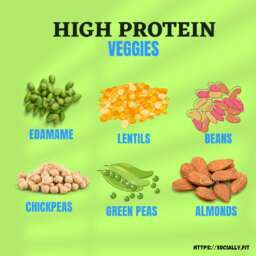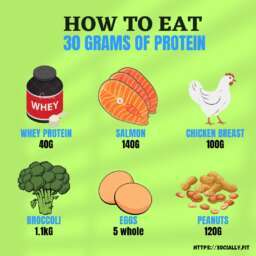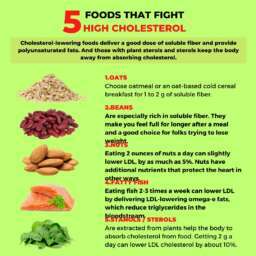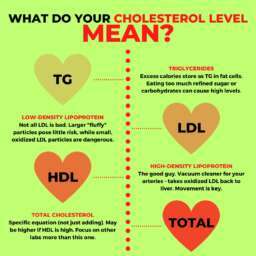Is Ragi Good for Weight Loss? Exploring the Benefits and Comparisons. Discover whether ragi is effective for weight loss. Learn about its nutritional benefits, how it compares to other grains, and tips for incorporating it into your diet.
Introduction: Is Ragi Good for Weight Loss?
In recent years, ragi has gained immense popularity as a superfood, particularly among those aiming for weight loss. This ancient grain, also known as finger millet, boasts numerous health benefits. In this article, we will explore whether ragi truly aids in weight loss, its nutritional profile, and how to incorporate it into your diet effectively.
Is Ragi Good for Weight Loss
What is Ragi?

Ragi, also known as finger millet, is a highly nutritious grain that is primarily cultivated in the southern regions of India and parts of Africa. Characterized by its small, brown grains, ragi is rich in essential nutrients and has been a staple food for many communities for centuries. It is often ground into flour and used to make various dishes, including porridge, roti, and traditional sweets. Ragi is celebrated not only for its versatility in cooking but also for its impressive health benefits, making it a popular choice among health-conscious individuals.
Ragi is particularly valued for its high nutritional profile, which includes significant amounts of protein, fiber, and essential minerals such as calcium and iron. The grain is gluten-free, making it an excellent alternative for those with gluten intolerance or celiac disease. Additionally, ragi is known for its antioxidant properties, which can help combat oxidative stress in the body. Its rich nutrient content and health benefits have led to a resurgence in popularity, especially among those looking to improve their diet and overall well-being.
Incorporating ragi into your diet can be a delicious and effective way to support weight loss while enjoying its numerous health benefits.
Is Ragi Good for Weight Loss
Nutritional Profile of Ragi
Ragi is packed with essential nutrients. Here’s a breakdown of its nutritional profile per 100 grams:
| Nutrient | Amount |
|---|---|
| Calories | 336 |
| Carbohydrates | 72.6 g |
| Protein | 7.3 g |
| Fat | 1.5 g |
| Fiber | 10.9 g |
| Calcium | 344 mg |
| Iron | 3.9 mg |
This impressive profile demonstrates ragi’s potential to support weight loss and overall health.
Is Ragi Good for Weight Loss
How Ragi Aids Weight Loss

- High Fiber Content: Ragi is an excellent source of dietary fiber, which plays a crucial role in weight management. High fiber foods promote satiety, helping individuals feel fuller for longer periods. This can lead to reduced overall calorie intake, making it easier to maintain or lose weight.
- Low Glycemic Index: Ragi has a low glycemic index (GI), which means it causes a slower and more gradual rise in blood sugar levels compared to high-GI foods. This property helps in controlling hunger pangs and reduces the likelihood of overeating, making it a suitable choice for those looking to lose weight.
- Rich in Calcium and Iron: Ragi is packed with calcium and iron, essential minerals that support overall health. Calcium is vital for bone health and can aid in fat metabolism, while iron is crucial for energy levels. Maintaining adequate levels of these minerals can help individuals stay active and motivated in their weight loss journey.
- Protein-Rich: Ragi contains a good amount of protein, which is essential for muscle repair and growth. Consuming protein-rich foods can enhance feelings of fullness and reduce cravings, making it easier to stick to a weight loss plan.
- Antioxidant Properties: The antioxidants present in ragi help combat oxidative stress and inflammation in the body. By reducing inflammation, ragi can support metabolic health, which is crucial for effective weight management.
- Promotes Healthy Digestion: The high fiber content in ragi aids in digestion and promotes regular bowel movements. A healthy digestive system is essential for effective weight loss, as it ensures that nutrients are absorbed efficiently and waste is eliminated properly.
- Versatile and Easy to Incorporate: Ragi can be easily incorporated into various dishes, making it a versatile addition to any diet. From ragi porridge to ragi pancakes, its adaptability allows individuals to enjoy it in different forms while reaping its weight loss benefits.
- Supports Healthy Snacking: Ragi can be used to make healthy snacks, such as ragi chips or energy bars. These snacks can provide a nutritious alternative to processed snacks, helping to curb unhealthy cravings and support weight loss efforts.
Incorporating ragi into your diet can be a delicious and effective way to support weight loss while enjoying its numerous health benefits.
Is Ragi Good for Weight Loss
Comparing Ragi with Other Grains

Ragi, or finger millet, is increasingly recognized for its nutritional benefits, especially when compared to more commonly consumed grains like rice and wheat. One of the standout features of ragi is its high calcium content, which is significantly greater than that found in other grains. This makes ragi an excellent choice for individuals looking to boost their calcium intake, particularly for those who are lactose intolerant or prefer plant-based sources of this essential mineral
Additionally, ragi is gluten-free, making it a suitable option for those with gluten sensitivities or celiac disease, unlike wheat, which contains gluten.When it comes to fiber content, ragi surpasses many other grains, including rice and wheat. The high fiber content in ragi aids in digestion and helps maintain a feeling of fullness, which can be beneficial for weight management
In terms of the glycemic index, ragi is considered to have a lower GI compared to rice, making it a better option for individuals managing diabetes or those looking to stabilize their blood sugar levels. Furthermore, ragi is also more environmentally sustainable compared to rice, as it requires less water and can thrive in less fertile soils, making it a more eco-friendly grain choice.In terms of carbohydrate content, ragi has a comparable amount to brown rice and wheat, but its nutritional profile is enhanced by its higher levels of essential nutrients and minerals. Overall, ragi stands out as a nutritious alternative to traditional grains, offering a range of health benefits that make it a valuable addition to a balanced diet.
Is Ragi Good for Weight Loss
Incorporating Ragi into Your Diet

Incorporating ragi into your diet can be both enjoyable and beneficial for your health. Here are some creative ways to include this nutritious grain in your meals:
Ragi Flour Recipes
Ragi flour can be used to prepare various dishes, making it a versatile ingredient in the kitchen. You can make ragi pancakes by mixing ragi flour with water, eggs, and your choice of spices or vegetables. These pancakes are not only delicious but also packed with nutrients. For a traditional Indian staple, try making ragi rotis by replacing regular wheat flour with ragi flour. Simply knead the ragi flour with water to form a dough and roll it out into flatbreads. Additionally, ragi porridge is a nutritious breakfast option; just cook ragi flour with water or milk and add fruits, nuts, or honey for flavor.
Ragi Snacks
Ragi-based snacks are excellent for healthy snacking. You can prepare ragi chips by mixing ragi flour with spices, rolling it out, and baking or frying until crispy. Another great option is ragi energy bars, which can be made by combining ragi flour with nuts, seeds, and natural sweeteners like honey or jaggery. These snacks are not only delicious but also nutritious, making them perfect for weight loss.
Is Ragi Good for Weight Loss
Additional Ways to Incorporate Ragi
- Ragi Idli: Substitute ragi flour for rice flour in your idli batter. This traditional South Indian dish becomes a healthier option, rich in fiber and nutrients.
- Ragi Dosa: Create a batter using ragi flour, water, and spices to make crispy dosas. Serve with chutney or sambar for a wholesome meal.
- Ragi Smoothies: Add a tablespoon of ragi flour to your morning smoothie for an extra boost of nutrition. It blends well with fruits and yogurt, enhancing the smoothie’s texture and health benefits.
- Ragi Pudding: Cook ragi flour with milk and sweeten it with jaggery or honey to create a delicious pudding. This can be a healthy dessert option that satisfies your sweet cravings.
- Ragi Upma: Use ragi flour instead of semolina to prepare upma, a savory dish typically made with vegetables and spices. This variation adds a nutritious twist to a classic breakfast item.
- Ragi Cookies: Bake cookies using ragi flour, oats, and nuts for a healthy snack. These cookies can be a great alternative to traditional cookies, providing more fiber and nutrients.
- Ragi Soups: Thicken soups with ragi flour instead of cornstarch or regular flour. This not only enhances the nutritional value but also adds a unique flavor to your soups.
By incorporating ragi into your diet through these various recipes and snacks, you can enjoy its health benefits while diversifying your meals. Whether you’re looking to lose weight or simply eat healthier, ragi is a fantastic addition to your culinary repertoire.
Is Ragi Good for Weight Loss
Potential Side Effects of Ragi

While ragi is a nutritious grain that offers many health benefits, it may also have some side effects for certain individuals. Here are ten potential side effects to consider, along with guidance for managing them:
- Digestive Issues: Due to its high fiber content, ragi can cause digestive discomfort such as bloating or gas, especially when consumed in large amounts.
To manage this, gradually increase your ragi intake to allow your digestive system to adjust, and ensure you drink plenty of water to aid fiber digestion. - Nutrient Absorption: The high fiber in ragi can interfere with the absorption of certain vitamins and minerals, particularly calcium and iron.
To counteract this, pair ragi with foods rich in vitamin C, like citrus fruits, to enhance iron absorption, and maintain a balanced diet that includes diverse food sources. - Allergic Reactions: Some people may be allergic to ragi or other millets, leading to symptoms such as itching, swelling, or gastrointestinal distress.
If this occurs, discontinue ragi consumption immediately and consult a healthcare professional for further evaluation. - Goitrogenic Effects: Ragi contains goitrogens, which can interfere with thyroid function, particularly in individuals with existing thyroid conditions.
If you have thyroid issues, consult your doctor before including ragi in your diet, and consider cooking it, as heat can reduce goitrogenic properties. - Caloric Density: Although ragi is nutritious, it is also calorie-dense. Overconsumption can lead to weight gain if not balanced with physical activity.
To avoid this, monitor portion sizes and incorporate ragi as part of a balanced diet that features a variety of foods. - Oxalate Content: Ragi contains oxalates, which can contribute to kidney stone formation in susceptible individuals.
If you have a history of kidney stones, it may be wise to limit ragi intake and seek personalized dietary advice from a healthcare provider. - Blood Sugar Levels: While ragi has a low glycemic index, excessive consumption can still affect blood sugar levels, especially in diabetics.
To maintain stable blood sugar, monitor your blood sugar levels and consult a healthcare professional to determine the appropriate amount of ragi for your diet. - Flatulence: The high fiber content in ragi can lead to increased gas production, causing discomfort for some individuals.
To alleviate this, consider soaking ragi before cooking, as this can help break down some of the complex carbohydrates that contribute to gas. - Potential for Contamination: Like other grains, ragi can be susceptible to mold and mycotoxin contamination if not stored properly.
To prevent spoilage, store ragi in a cool, dry place in airtight containers to maintain its quality and safety. - Interference with Medications: The high fiber content in ragi may hinder the absorption of certain medications, potentially reducing their effectiveness.
If you are on medication, consult your healthcare provider regarding the timing of ragi consumption in relation to your medications to ensure optimal effectiveness.
Being aware of these potential side effects and following the provided guidance can help you enjoy the health benefits of ragi while minimizing any adverse effects. Always consult with a healthcare professional if you have specific health concerns or dietary restrictions.
Is Ragi Good for Weight Loss
Comparison of Fiber Content: Ragi vs. Oats for Weight Loss
| Aspect | Ragi | Oats |
|---|---|---|
| Fiber content (per 100g) | 15g | 10g |
| Soluble fiber | Moderate (1.7g) | High (4g) |
| Insoluble fiber | High (13.3g) | Moderate (6g) |
| Fiber type | Resistant starch | Beta-glucan |
| Satiety level | High | Moderate |
| Water retention | Moderate | High |
| Digestive health | Promotes regularity | Supports gut health |
| Caloric density | Lower | Moderate |
| Weight loss support | Strong | Moderate |
| Recommended serving size | 30g | 40g |
Analysis of Fiber Content Comparison
- Ragi contains a higher overall fiber content than oats, which aids in promoting feelings of fullness and supporting weight loss.
- The soluble fiber in oats, particularly beta-glucan, is effective in controlling cholesterol levels, but ragi’s higher insoluble fiber can enhance digestive health.
- Ragi’s fiber promotes satiety, making it a powerful tool in weight management.
- Oats, while beneficial, may not provide the same level of satiety due to their lower fiber content.
- Ragi’s lower caloric density compared to oats allows for larger serving sizes without significantly increasing calorie intake, enhancing its weight loss potential.
Is Ragi Good for Weight Loss
Comparison of Weight Loss Effectiveness: Ragi vs. Jowar vs. Wheat
| Aspect | Ragi | Jowar | Wheat |
|---|---|---|---|
| Fiber content (per 100g) | 15g | 13g | 12g |
| Protein content | 7g | 9g | 13g |
| Caloric density | Lower | Moderate | Higher |
| Glycemic index | Low (60) | Medium (70) | High (75) |
| Gluten content | Gluten-free | Gluten-free | Contains gluten |
| Nutritional profile | High in calcium | High in iron | High in B vitamins |
| Satiety level | High | Moderate | Moderate |
| Weight loss support | Strong | Moderate | Weak |
| Versatility | High | Moderate | High |
| Cooking time | Quick | Moderate | Quick |
Analysis of Weight Loss Effectiveness Comparison
- Ragi proves to be more effective for weight loss than both jowar and wheat due to its lower caloric density and higher fiber content.
- The gluten-free nature of ragi makes it suitable for those with gluten sensitivities, unlike wheat.
- Ragi’s low glycemic index contributes to stable blood sugar levels, enhancing its weight loss effects compared to jowar and wheat.
- While jowar offers good nutritional benefits, its slightly higher glycemic index makes it less effective for weight management compared to ragi.
- Overall, ragi’s combination of high fiber, low caloric density, and gluten-free status positions it as an excellent choice for weight loss.
Is Ragi Good for Weight Loss
Comparison of Glycemic Index: Ragi vs. Rice for Weight Management
| Aspect | Ragi | Rice |
|---|---|---|
| Glycemic index | Low (60) | High (72) |
| Fiber content | High (15g) | Low (0.4g) |
| Satiety level | High | Low |
| Nutritional value | High in minerals | Moderate |
| Blood sugar impact | Stabilizes | Spikes |
| Cooking time | Moderate | Quick |
| Recommended serving size | 30g | 150g |
| Caloric content | Lower | Higher |
| Weight loss support | Strong | Weak |
| Dietary versatility | High | Moderate |
Analysis of Glycemic Index Comparison
- Ragi’s low glycemic index significantly aids in weight management by preventing rapid spikes in blood sugar levels, unlike rice, which can cause spikes.
- The high fiber content in ragi enhances satiety, making it more effective for weight control compared to rice.
- By stabilizing blood sugar levels, ragi helps in reducing hunger cravings, contributing to better weight management.
- Rice, while a staple food, does not provide the same level of nutritional benefits and satiety as ragi, making it less favorable for weight loss.
Is Ragi Good for Weight Loss
Comparison of Calorie Content: Ragi vs. Quinoa for Weight Loss
| Aspect | Ragi | Quinoa |
|---|---|---|
| Caloric content (per 100g) | 336 kcal | 368 kcal |
| Protein content | 7g | 14g |
| Fiber content | 15g | 7g |
| Carbohydrate content | 72g | 64g |
| Fat content | 1.5g | 6g |
| Nutritional profile | High in calcium | High in magnesium |
| Cooking time | Moderate | Moderate |
| Satiety level | High | Moderate |
| Weight loss support | Strong | Moderate |
| Versatility | High | High |
Analysis of Calorie Content Comparison
- Ragi contains fewer calories than quinoa, which can be beneficial for those looking to reduce caloric intake for weight loss.
- Despite its slightly higher caloric content, quinoa offers a greater protein quantity, which can also support weight management through increased muscle mass.
- Ragi’s higher fiber content promotes greater satiety, making it an excellent choice for those looking to control hunger.
- Overall, ragi’s lower calorie density enhances its effectiveness for weight loss compared to quinoa.
Is Ragi Good for Weight Loss
Comparison of Nutritional Benefits: Ragi vs. Barley for Weight Loss
| Aspect | Ragi | Barley |
|---|---|---|
| Fiber content | 15g | 17g |
| Protein content | 7g | 12g |
| Caloric content | 336 kcal | 352 kcal |
| Glycemic index | Low (60) | Medium (66) |
| Nutritional value | High in calcium | High in selenium |
| Satiety level | High | High |
| Cooking time | Moderate | Moderate |
| Versatility | High | Moderate |
| Weight loss support | Strong | Moderate |
| Digestive health | Promotes regularity | Supports gut health |
Analysis of Nutritional Benefits Comparison
- Ragi and barley both offer high fiber content, but ragi’s lower glycemic index makes it more favorable for weight loss.
- While barley contains more protein, ragi provides a unique set of minerals, particularly calcium, enhancing its nutritional profile.
- Both grains promote satiety, but ragi’s lower caloric density provides an advantage for those focused on weight loss.
- Overall, ragi presents a compelling case as a weight loss-friendly grain, particularly when considering its glycemic index and mineral content compared to barley.
Is Ragi Good for Weight Loss
FAQ: Is Ragi Good for Weight Loss?
Can Ragi help in reducing belly fat?
Yes, ragi can help reduce belly fat due to its high fiber content and low glycemic index, which promote satiety and regulate blood sugar levels.
How much Ragi should I consume daily?
A serving of 30-50 grams of ragi flour is generally recommended for weight loss purposes.
Can I eat Ragi if I have diabetes?
Absolutely! Ragi is a great grain option for diabetics due to its low glycemic index.
Is Ragi gluten-free?
Yes, ragi is naturally gluten-free, making it suitable for individuals with gluten intolerance.
How does Ragi compare to oats for weight loss?
Both ragi and oats are nutritious, but ragi has a higher calcium and fiber content, which may offer additional benefits for weight management.
Is Ragi Good for Weight Loss
Conclusion: Is Ragi Good for Weight Loss?

Incorporating ragi into your diet can offer a plethora of health benefits due to its rich nutritional profile, including high levels of fiber, calcium, and essential minerals. This versatile grain is not only a great source of energy but also supports weight management and digestive health. Its low glycemic index makes it an excellent choice for individuals looking to maintain stable blood sugar levels, including those with diabetes. With numerous ways to prepare ragi, from porridge and rotis to healthy snacks, it can easily be integrated into various meals, enhancing both flavor and nutrition.
However, it’s essential to be aware of potential side effects associated with ragi consumption. While generally safe for most individuals, some may experience digestive issues, allergies, or interactions with medications. Understanding these potential concerns allows you to make informed dietary choices and seek advice from healthcare professionals when needed. By monitoring your intake and paying attention to your body’s responses, you can enjoy the benefits of ragi while minimizing any risks.
Ultimately, ragi stands out as a valuable addition to a balanced diet, especially for those seeking nutritious alternatives to more common grains like wheat and rice. Its environmental sustainability and health advantages make it a wise choice for individuals aiming to improve their overall well-being. As you explore the culinary possibilities of ragi, you may find that it not only nourishes your body but also adds variety and excitement to your meals.
Click here to know more about weight loss. Subscribe to Workout with Hunar for weight loss and workout videos.
Is Ragi Good for Weight Loss















2 thoughts on “Is Ragi Good for Weight Loss?”